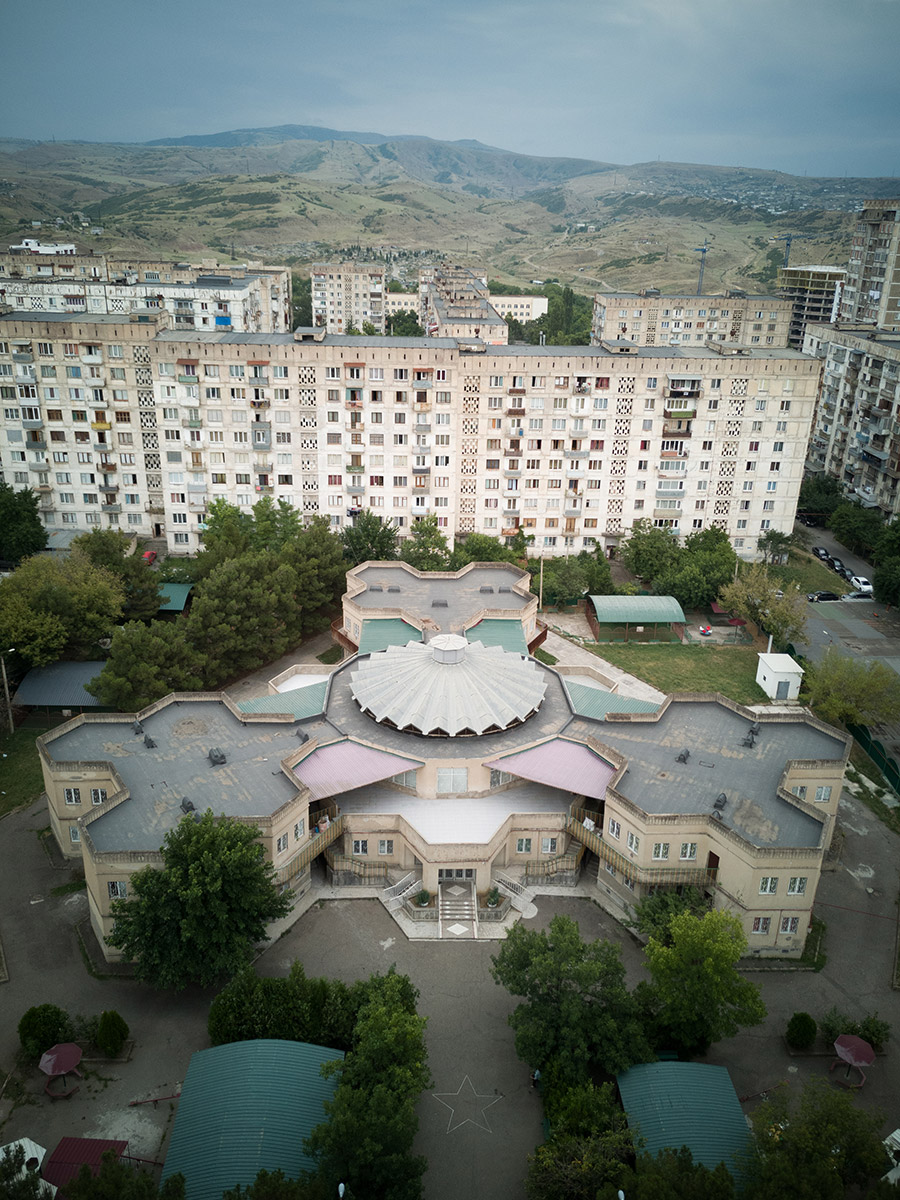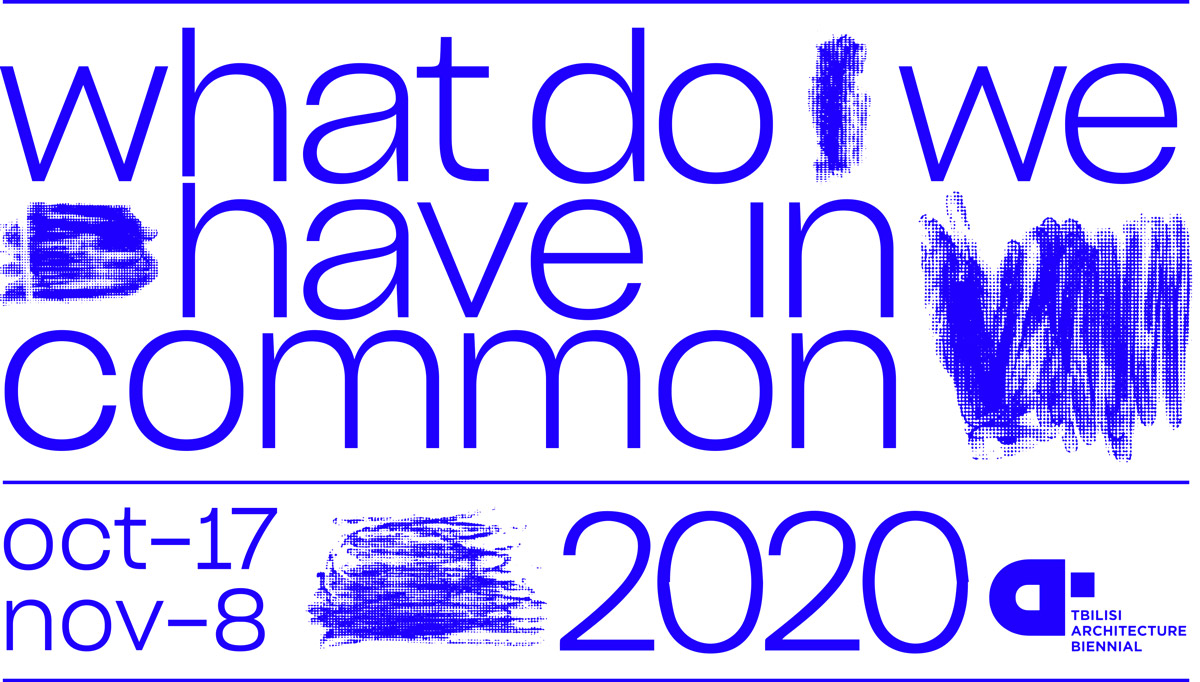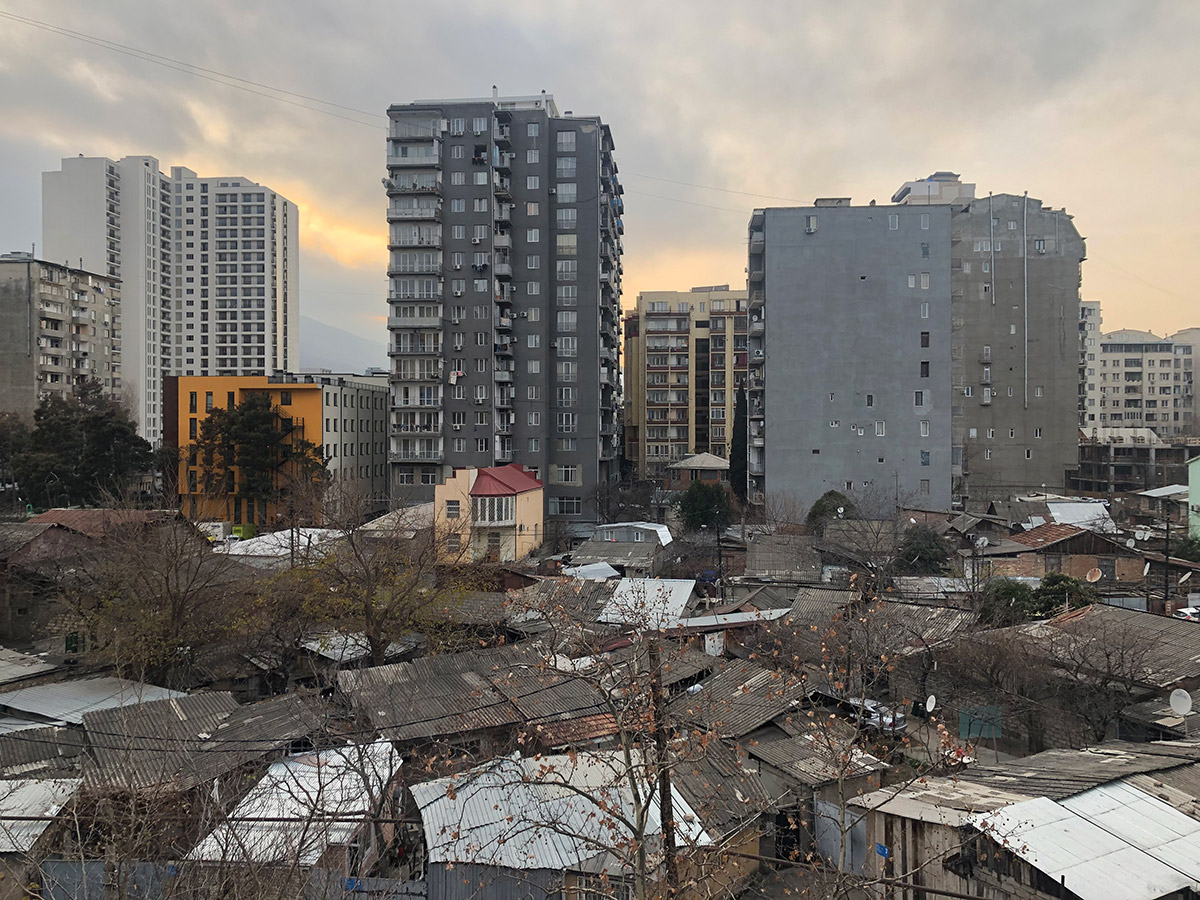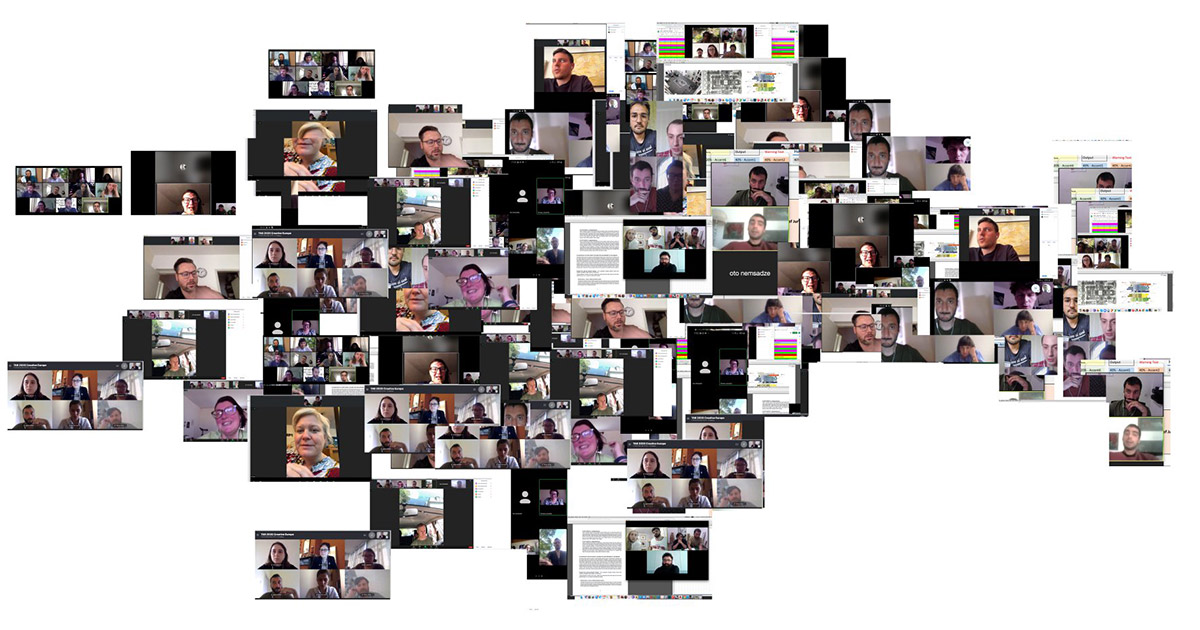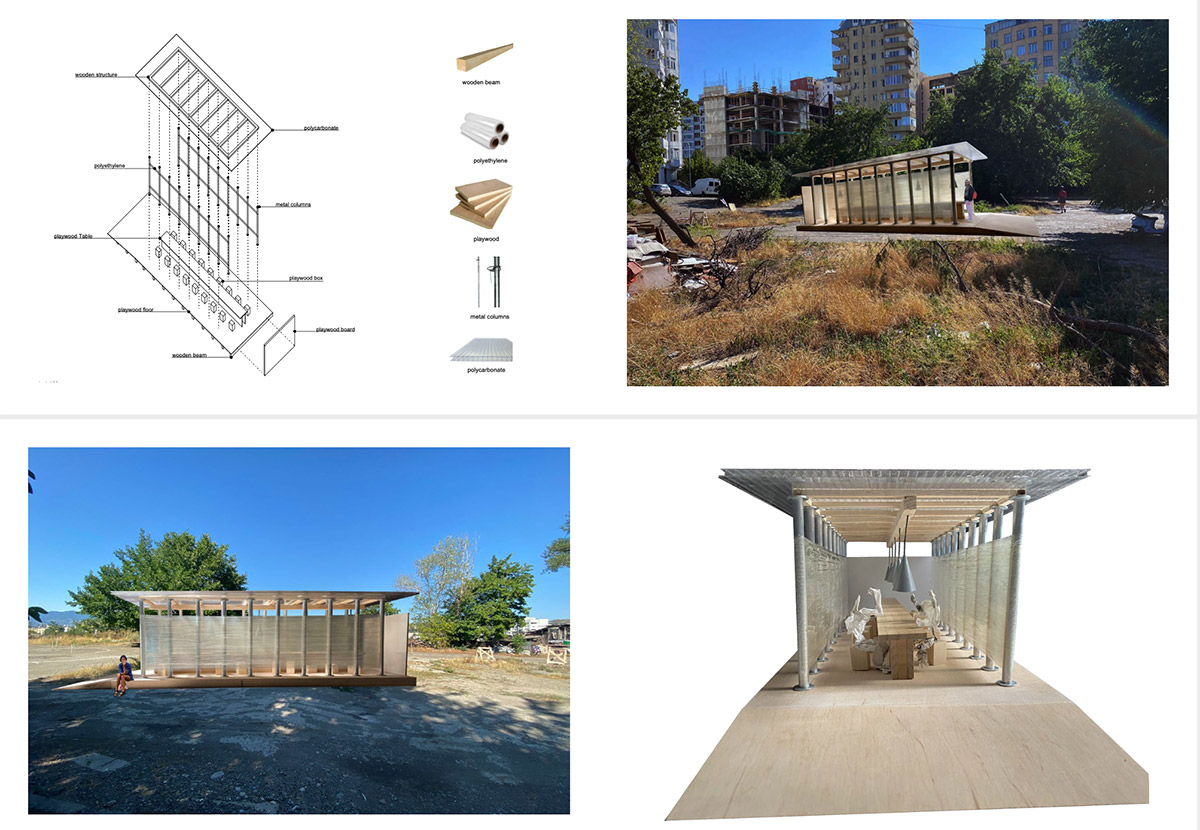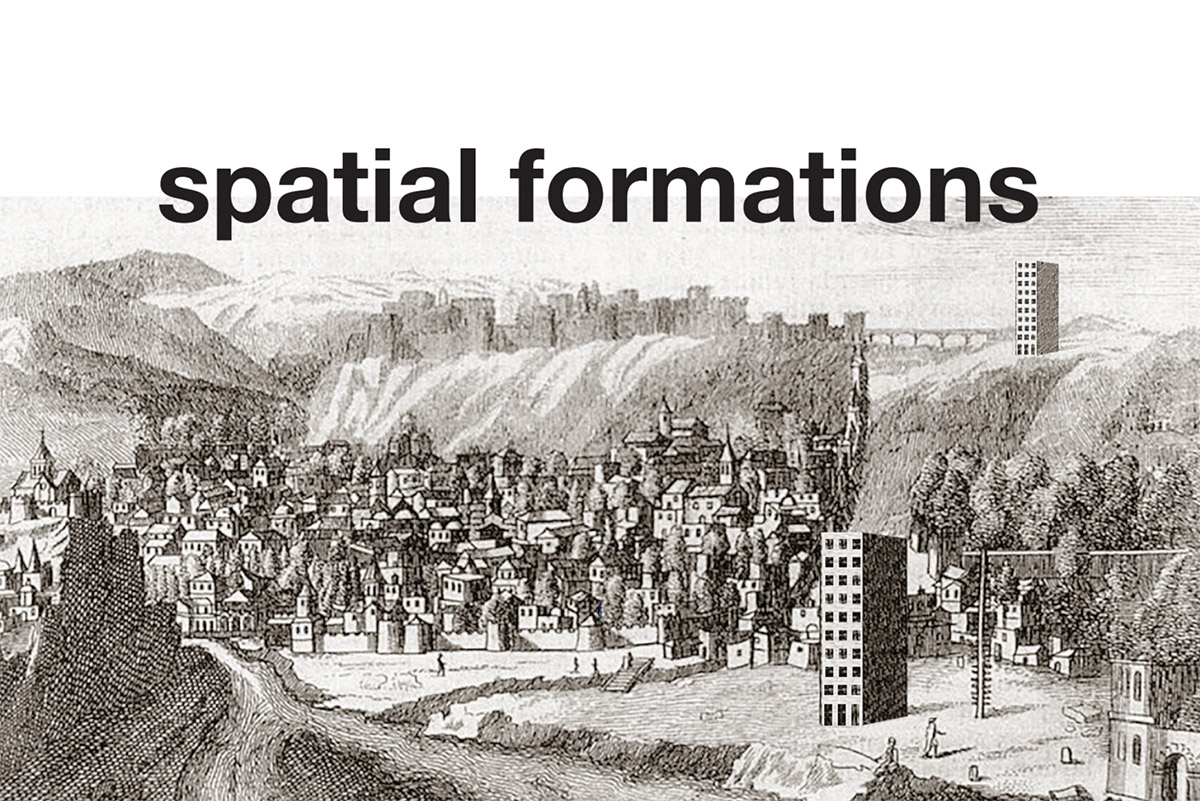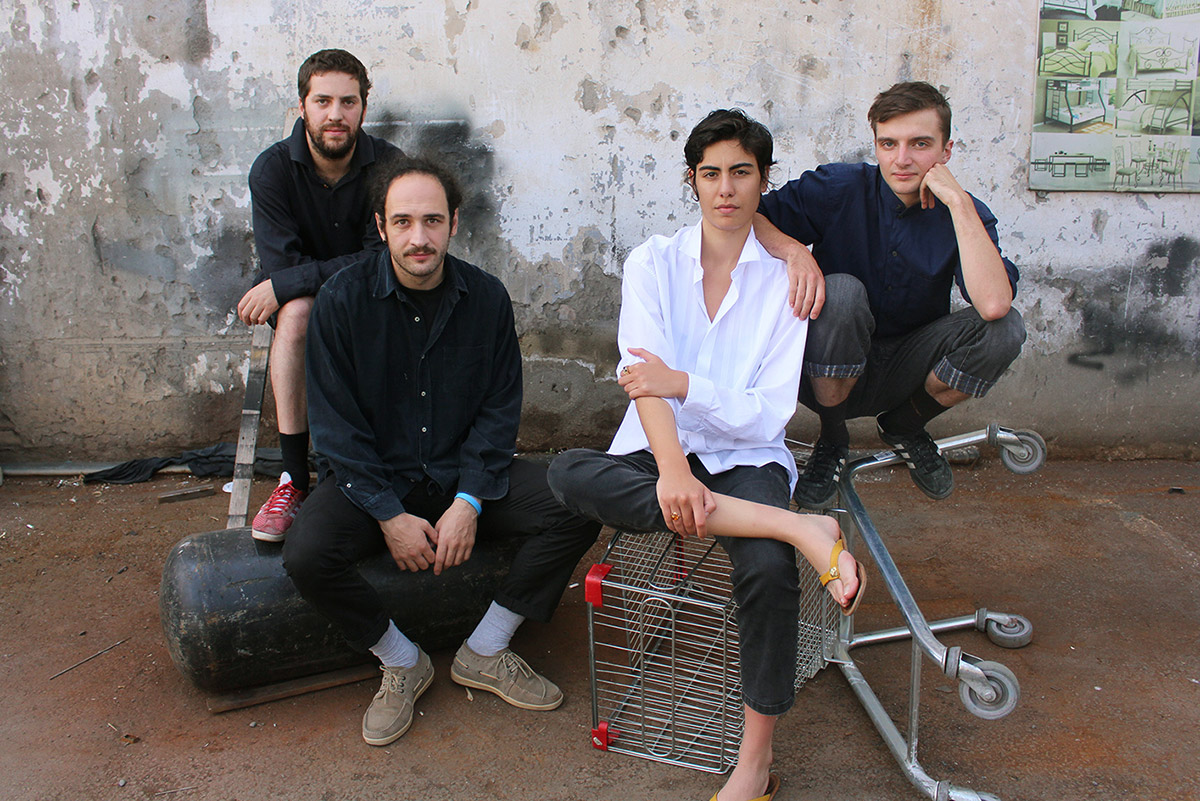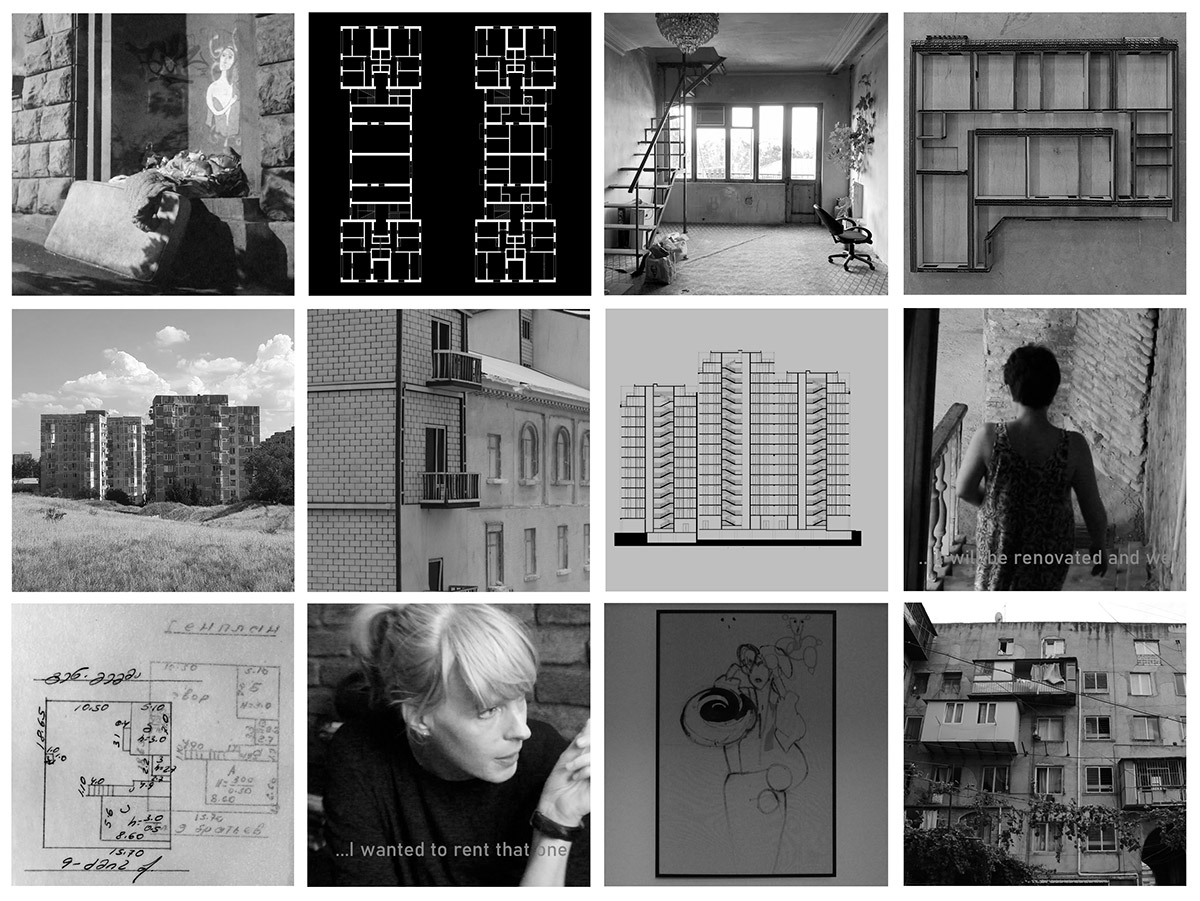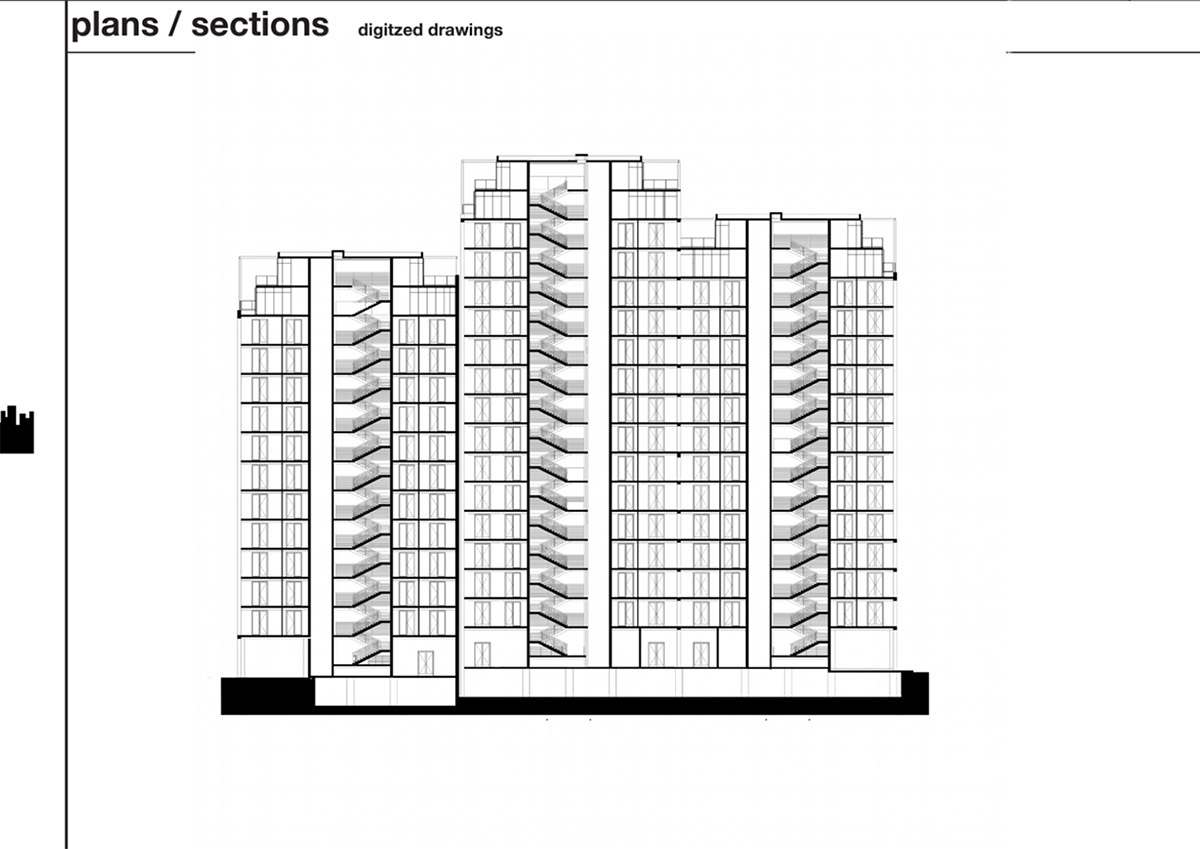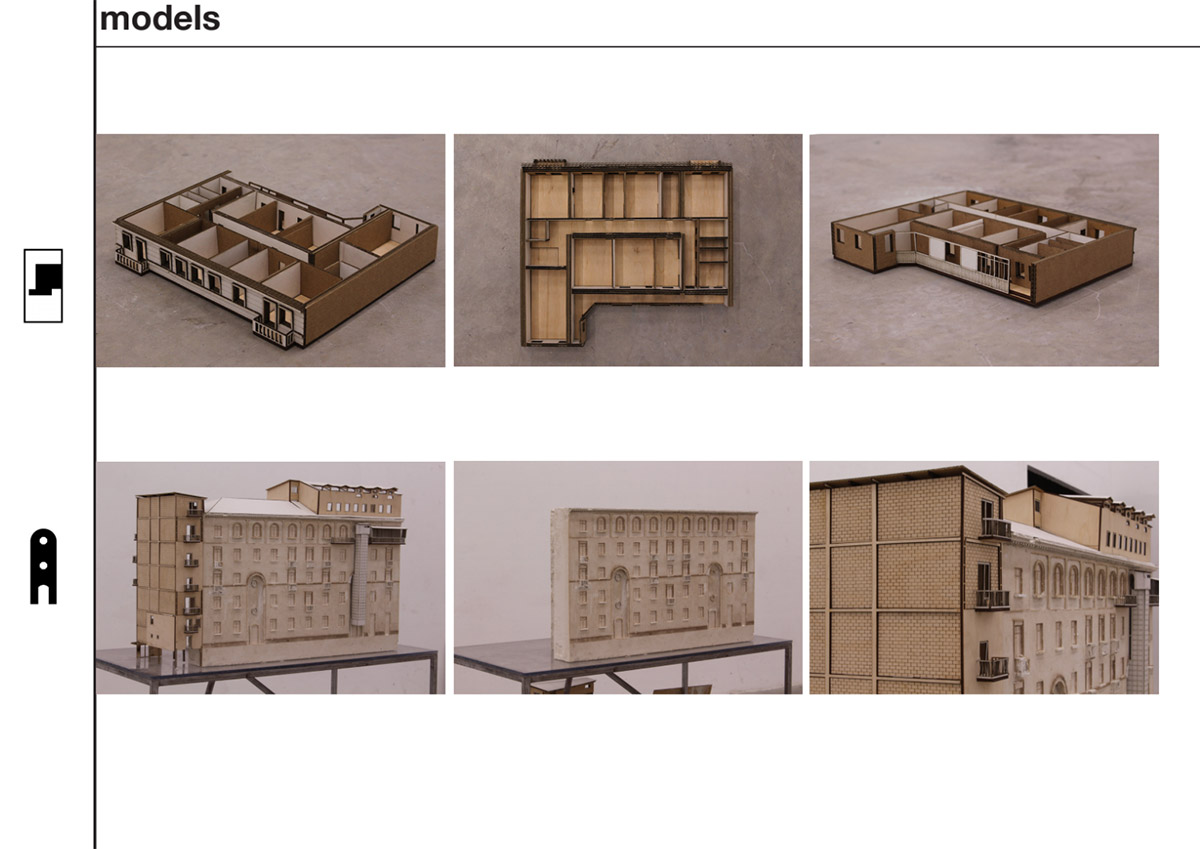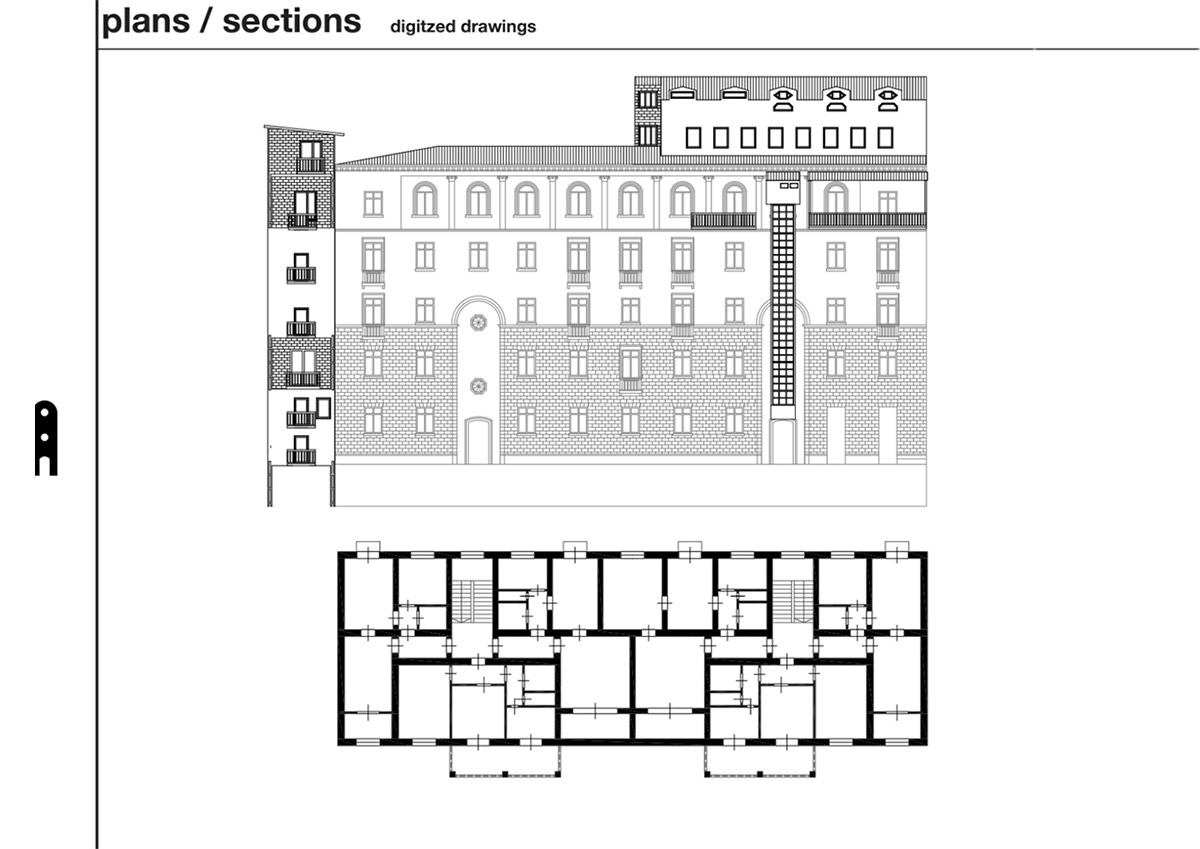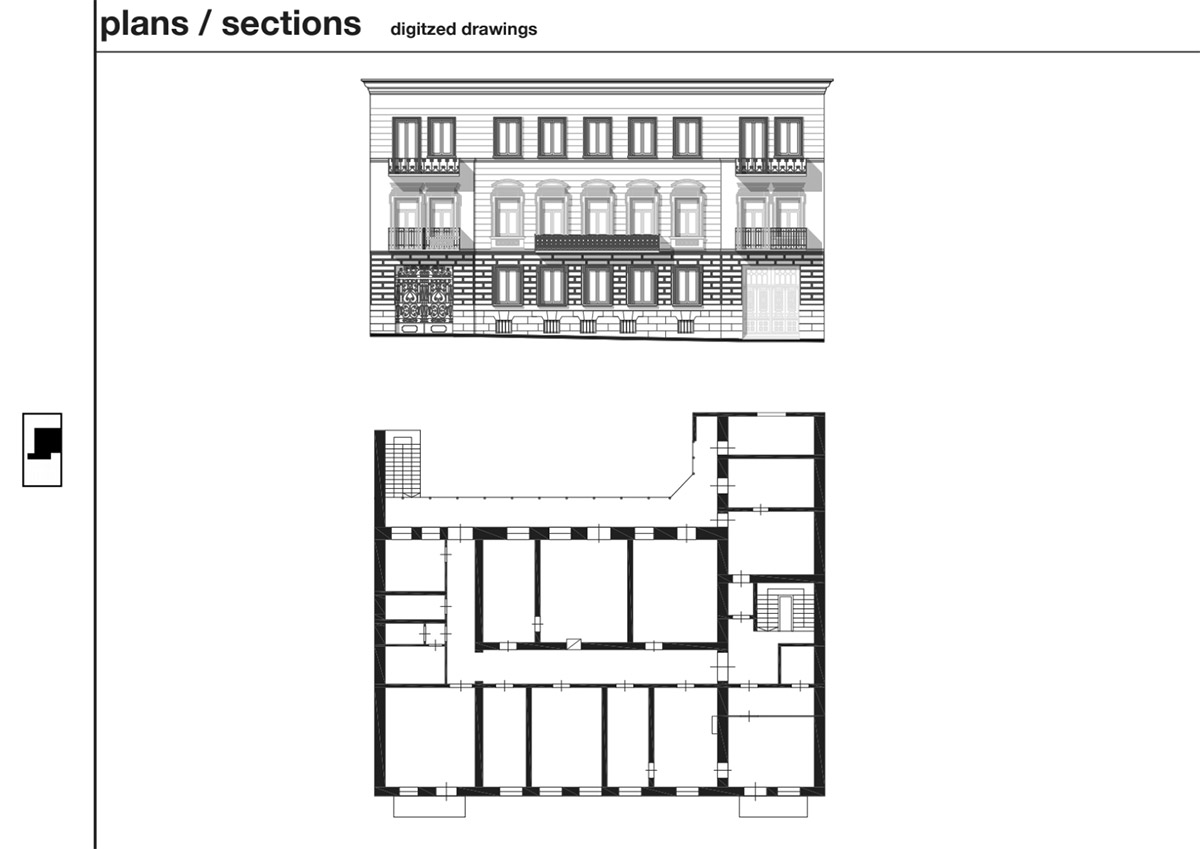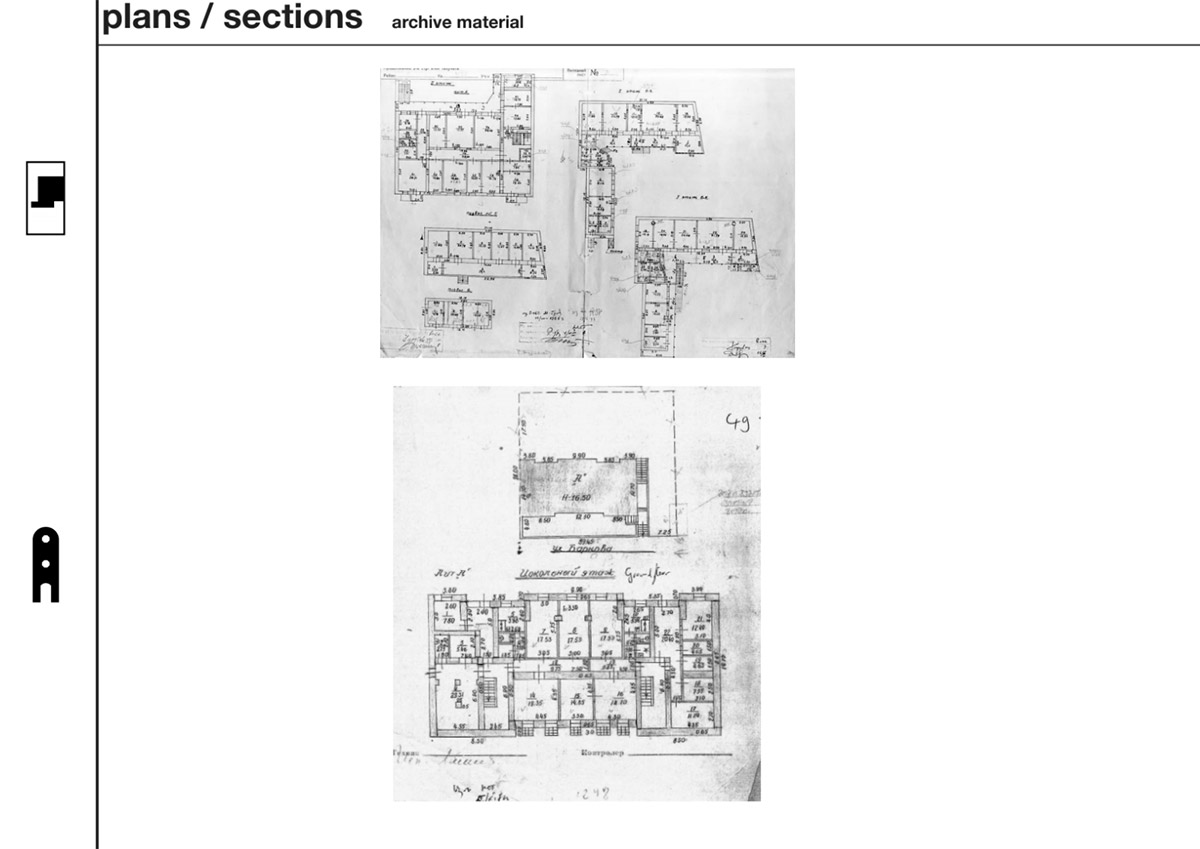20/040
TAB
Architecture Biennial
Tbilisi
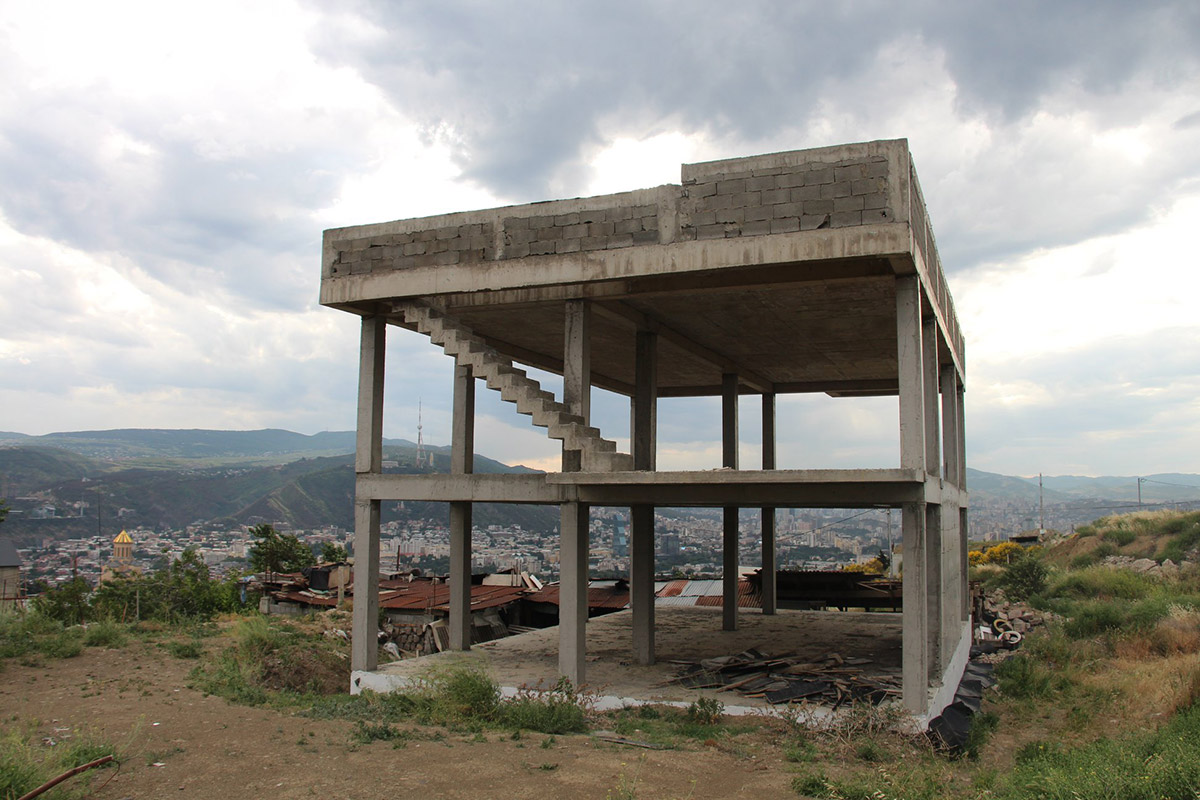
«Architecture should stop this attitude of always coming up with solutions to problems. Whatever we imagine for the future, the future might give us surprises. The future can imagine us.»
«Architecture should stop this attitude of always coming up with solutions to problems. Whatever we imagine for the future, the future might give us surprises. The future can imagine us.»
«Architecture should stop this attitude of always coming up with solutions to problems. Whatever we imagine for the future, the future might give us surprises. The future can imagine us.»
«Architecture should stop this attitude of always coming up with solutions to problems. Whatever we imagine for the future, the future might give us surprises. The future can imagine us.»
«Architecture should stop this attitude of always coming up with solutions to problems. Whatever we imagine for the future, the future might give us surprises. The future can imagine us.»
Please, introduce yourself…
We are a group of four founding members of the Biennial – Tinatin, Natia, Gigi, and Otar. This year, Tamara manages our project together with partners from Berlin, Kyiv, and Skopje. Besides us, behind the project, we have a fantastic team from different parts of the world who do their best to make the Biennial a success story this year. Tbilisi Architecture Biennial (TAB) aims to bring together professionals from diverse disciplines united under one topic on a biannual basis. Policymakers, the local public, and other stakeholders are presented during the event, initiating and broadening the critical discourse on architectural and urban issues in Tbilisi and beyond. The TAB platform joins forces to generate exhibitions, new architectural installations, spatial experiments, symposiums, and other activities related to the event's theme.
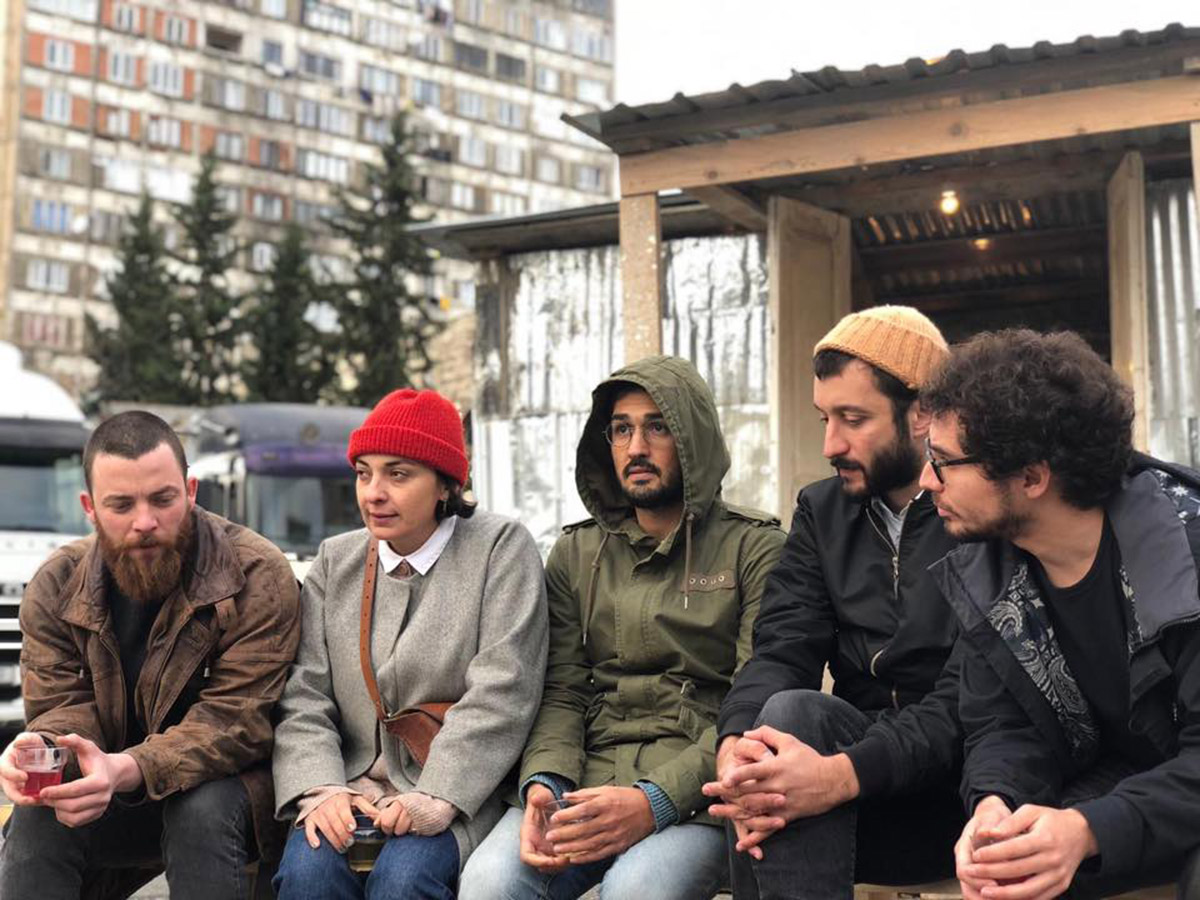
TAB Team
The first event of Tbilisi Architecture Biennial took place in 2018, focusing on informal architectural and urban space. Under the title “Buildings are not enough,” the event attracted participants and collaborators from more than 40 countries worldwide.
The event consisted of primary and collateral events. Main events included exhibitions, installations, symposiums, and others. At the same time, collateral events focused on workshops, personal exhibitions, and expert talks. Tbilisi Architecture Biennial also organizes pre- and post-event talks where the team invites different speakers to talk on topics relevant in the area of architecture and urbanism. During recent months, the TAB team hosted Ivan Blasi, Reinier de Graaf, Pierre de Meuron, and many others.
Find the sum-up of the 2018 Biennial here → youtube.com
How did you find your way into the field of architecture and/or the extended filed of architecture you are working and navigating in now?
Three of the TAB founding members come from an architectural background: Gigi is a practicing architect and manages his own practice called WUNDERWERK. Otar works in Urban Management and Development while pursuing his Ph.D. in Urbanism, and Tinatin is more focused on the research. Since founding TAB in 2017, we are all involved in curatorial and cultural management activities in architecture and urbanism. In a way, our broad approach to architecture and urbanism allows us to work on different levels in the field. Putting together an event like TAB requires a lot of multi-tasking, flexibility and creativity. Being so different in our professional lives helps us join forces and organize the event like TAB, thatenhances cultural discourses about actual socio-cultural issues in Georgia.It would not have been possible without the backing of a passionate multi-skilled team.
What are your experiences founding your own platform / a biennial?
Our initial intention was to establish a common platform where different actors would unite under common problematic topics our city Tbilisi faces. Starting a new project from zero is always very challenging. While organizing the first edition of the Biennial in 2018, we encountered many difficulties regarding funding, limited resources, working with different people, raising awareness, dealing with private owners of exhibition spaces, and the list goes on. Despite all of the challenges, our first experience was the best experience as we gained immense knowledge and know-how.
The first TAB brought together a number of local and foreign actors and analyzed the issues of urban informalities. Exhibitions, guided tours, installations, lectures, movie screenings, symposiums, and other relevant cultural activities served to promote cultural discussions, artistic cooperation and public understanding of specific urban topics. It goes without saying that TAB 2020 builds on the success of the previous festival. It is designed to facilitate discussions and cooperation in architecture and urban planning. Further, it serves as support for young artists to express themselves and to build capacity joining a unified space of professionals. The biggest challenge is to create and maintain this platform that might act as a catalyst for change: Keeping it is as vital as it results in knowledge transfer.
What theme does the Tbilisi Architecture Biennial 2020 revolve around?
The second edition of the Tbilisi Architecture Biennial, which is conceived under the name „What Do We Have in Common?” proposes to take a closer look at the notion of commonness in our increasingly individualized and fragmented societies.
Focusing on the overall theme of common spaces TAB2020 will try to question the significance of what we all have in common. This issue attains special importance in Georgia, where a painful change from planned to market economy brought a fundamental social transition and contributed to the individualization and fragmentation of urban landscapes. In this process, the feeling of common space and society seems to be forgotten, while citizens struggle to share common responsibilities. We try to understand the notions of private and public.
A major objective is to promote discussions and understanding about the idea of “togetherness” in Tbilisi’s local context. By questioning the “common” we’ll be addressing several layers of urban space, such as internal and external, virtual and physical, as well as examine the emergence, development, and consequences of common areas. At the same time, the project will seek to encourage shared responsibility for collective areas and improve the social value of common spaces.
The impact of COVID-19 raises new questions about the role of common spaces. What is the effect of restrictions related to public spaces on society? How can we uphold a sense of community that goes beyond borders in the midst of growing nationalism? In times of closing borders, increasingly restrictive migration policies, and fragile states it is essential to examine practices of exclusion and their consequences.
This includes analyzing how the new reality of a divided continent manifests itself in public spaces. TAB is planning to turn newly emerged restrictions into opportunities and realize the Biennial almost exclusively on a virtual platform where geographic limitations become irrelevant. The reinvented Biennial aims at becoming a voice, which can be spread even further in order to reach out to more people globally. This way the event will transform itself into a “Common Architecture Biennial” emerging from Tbilisi but attempting to propagate the concept of “togetherness” far beyond the borders of Tbilisi and Georgia.
How would you characterize Tbilisi at as location for practicing architecture/realizing a building?
Tbilisi is full of unexpected, untouched, overbuilt, and chaotic spaces that make the city extremely interesting to work on. Increasingly, the city is being exploited by developers rapidly erecting high-rise residential blocks. In this rapid, unpredictable, and chaotic urbanization process, it becomes even more important for cultural organizations to raise awareness and highlight the problems our city is facing. Another interesting and very challenging factor in Tbilisi is that things change on an everyday basis. Our working process has to adapt to these changes, we should always have a backup plan and need to be flexible in case it is necessary.
Tbilisi
What does your desk/working space and the site for the biennial look like at the moment?
For you as a group, what is the essence of architecture?
The essence of architecture changes depending on many factors, locations, realities, etc.
What was the most important thing you needed to agree on as a group to be able to create this project together?
Most important to us are dedication and responsibility for the project, as well as respecting each other as a group. This is what unites us all, no matter where we are based is the city of Tbilisi itself. It gives us all the inspiration and feeds us with new ideas.
Are there other biennials that you perceived as role model/good example? How did other projects influence your work? How and what did you learn from them?
Our first inspiration was One Architecture Week held in Plovdiv, Bulgaria, in 2016. The event took place in one of Plovdiv’s mass housing neighborhoods, which inspired us to organize a similar event in Gldani in Tbilisi. Another example of the Biennial we followed and got inspired by is the Bi-City Shenzhen Biennale of Urbanism\Architecture and Chicago Architecture Biennial. We learned a lot form their structures and team formation. The Bi-City Biennial we found most inspiring regarding their approach to the localities where they base their events.
What needs to change in the field of architecture according to you? How do you imagine the future?
Architecture should stop this attitude of always coming up with solutions to problems. Whatever we imagine for the future, the future might give us surprises. The future can imagine us.
What are your thoughts on architecture and society?
Like everything else, architecture also reflects the society in which it exists. Although sometimes architecture disconnects with the society in which it exists and appears as a separate independent phenomenon or vice versa, the society neglects the architecture around them. As an example, let’s talk about some post-soviet countries: Society tries to erase the past by destroying soviet modernist buildings.
If we look at Tbilisi and its recent developments, we can analyze society really well. In our local reality, the post-soviet spatial, political, and social transformation has been accompanied by many new understandings and new urban vocabulary. The understanding of common space developed into a very complex issue.
If there were one skill you could recommend to a young architect to study in depth at architecture school: what would it be and why?
Read books. In the best case: a lot of them. For young architects and students, it is important to understand architecture not only as an independent object but rather to analyze it through history, locality, surrounded space, and the society in which it exists. Architecture cannot live separately from other disciplines, which is crucial for future architects to understand.
Project 1
Birzhastation
One of the highlight projects of TAB 2020 is Birzhastation. Birzhastation is an archaeological exploration of the neo-liberal ideology of architectural transparency in the post-Socialist world (and in the global “wild capitalist” reality of the 21st century), – named in a fiddly, imaginative cocktail of Georgian, Russian and English. Birzhastation represents an archi-ethnographic exploration of the possibilities and pitfalls of fine ideas (transparency, openness, horizontality, togetherness, the commonness) in a time of an ideological crisis, and amid a global rise of the new types of militarized police regimes. While in many countries of the world we are still naively enamored by architectural transparency as a metaphor of political openness and economic honesty, in Tbilisi, partly as a result of Saakashvili’s failed experiment, people, in this regard, tend to be more cautious.
Birzhastation is a place of gathering, commonness, and belongingness; A place for the acceptance, and sharing information.This temporary installation is located on the former Academe-city territory and merges with the contextual importance of the place. The project is intended to encourage the rest of the world to learn about Tbilisi’s political-aesthetic experience.
The shape and the features of Birzhastation – symmetrical, horizontal, neutral, rectangular laboratory, semi-transparent dramatically-lit – echo the typology of the Besedka (the word comes from Russian беседа, which means conversing), one of the simple architectural elements of numerous Soviet cities, villages, micro-districts, parks and courtyards. Besedka is a place for gathering, communicating, playing, social condensation and represents one of many types of Birzha. Birzha itself is a place for a social get-together that grips different forms, characteristics and ideas and is usually located in altered public spaces. Birzhas are typically self-organized by people themselves.
The former Academe-city, in turn, is a place that well reflects the failures as well as success and afterlives of both Soviet (Socialist) and post-Soviet (Neo-liberal) systems. This is a place of the collapse of vertical ideologies. Since the 90s, under the extreme conditions of Wild Capitalism, this chaotically developed area in itself combines the elements of 30’s Stalinist Soviet architecture, the unrealized idea of the Academe-city itself (60’s and 70’s architecture) and the remains of some slums and barracks.
In the frameworks of TAB, Birzhastation will host an active programme of discussions, debates and libations (physically and online) to create a zone of openness, publicness, intimacy, perversion, wildness, commonality, and collective social condensation, inspired by the Georgian practice of Birzha – which stands in opposition to the pseudo-transparency (pseudo-prozrachnost) of the neoliberal ideology of architectural transparency in the post–Socialist world.
The program will also feature the discourse on all-glass police stations built throughout Georgia during Saakashvili’s Presidency. These buildings were supposed to symbolize total transparency and fighting against corruption and police brutality. Rejecting the Pseudo-Prozrachnost of Police space, our Birzhastation will thus be a site of Post-Pseudo-Prozrachnost. The online and physical space of Birzhastation will as well be open for the local interventions
Project Authors: David Brodsky, Ana Chorgolashvili, Denis Maksimov, Maria Mileeva, Michal Murawski
Web: https://www.pirammmida.life/birzhastation
Instagram: @birzhastation
Project 2
Spatial Formations
For the second Tbilisi Architecture Biennial “What Do We Have in Common?” the W2KSHOP collective (Lado Shonia, Liza Bokeria, Dimitri Eristavi, Tilman Haseloff), in collaboration with Irina Kurtishvili, is organizing at Contemporary Art Space Maudi an exhibition based on the Spatial Formations research.
theme
The Spatial Formations project examines the relationships between residents and the places they occupy by observing the living spaces around Tbilisi. The histories of and causes behind these Formations are considered in the context of larger social transformations in the recent history of Georgia. Space, both as physical as well as social product, is experienced differently by various social groups. It is shaped through interactions between different agents, planners and users—from political authorities to civil society. Living together in a city is a practice of sharing and using spaces. Thereby certain models of ownership are created, defining what is private and public, common or secluded. Political, economic and cultural changes that influence these processes are expressed as social relations and material realities of our environments.
subject of inquiry
Our project is looking at eight prevailing typologies of residential spaces in the city, capturing the pattern of spatial formations and experiences they generate. It attempts to answer the following questions: How is a building constructed and transformed by architects and non-architects? What are social relations within a structure? How are property lines drawn? What kind of symbolic meaning do these practices incorporate? What can they state about past and present mentalities? How are residents affected in times of crisis like the current pandemic?
Understanding individual cases and then comparing them with each other gives us a view of common experiences but also differences in terms of sociability, privacy, safety, accessibility, general satisfaction etc.
Each situation also tells a story on how individuals or groups respond and adapt to architectural conditions. What can we learn from analyzing tactics and strategies for improving one’s living space?
Project Authors: W2KSHOP; Tilman Haseloff, Lado Shonia, Dimitri Eristavi, Elizaveta Bokeria
Website: www.biennial.ge
Instagram: @tbilisiarchitecturebiennial
Fotocredits: ©TAB, ©Gigi Shukakidze, ©Levan Kalandarishvili
Interview: kntxtr, ah+kb, 10/2020

